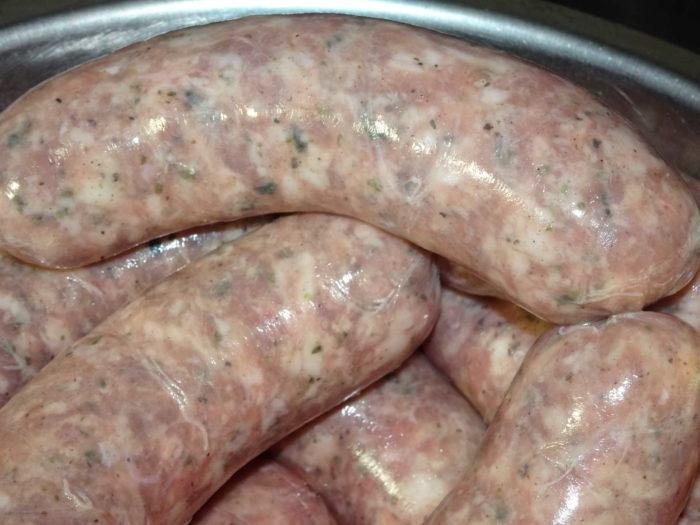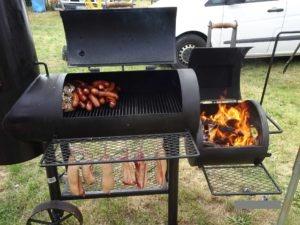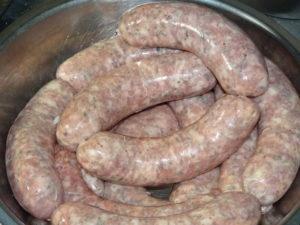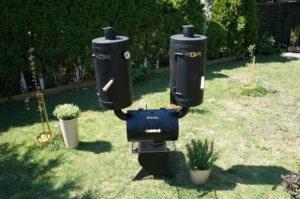For sausages it is best to use pork from fattening pigs weighing over 130 kg. The meat should be cooled down for 48 hours.
Raw materials: ( – for 10 kg of sausage ) – non-labelled meat
- Class I pork – lean preferably from ham. – 2.5 kg
- Class II pork – high fat content up to 35 % – 6.5 kg
- Lean beef, can be striped or knuckle skinny meat – 1.0 kg

Additives: / per 10 kg of meat
Reduce proportionally with less meat.
- Natural pepper – 40 grams (but depending on the pepper, not every pepper has an honest power, it is best to try)
- Marjoram – 20 g
- Garlic – 30 g ? w.g. taste preferences
- Sugar – 20 g
- Brewed salt (not iodised) – 190 g
- Natural intestines – Ø (30 – 32 mm)
- As someone likes, you can add hammered mustard seed or coriander g of your own taste fantasy.

Method of preparation:
Non-curing meat should be prepared as follows:

Class I meat – grind in a wolf or a meat mincer using a 20 mm mesh sieve, can be a jerk (you can also cut with a knife into 20 mm x 20 mm pieces).
Class II meat – we grind it on a 10 or 12 mm mesh screen.
Skim beef or lean pork knuckle – cut on a 3 mm mesh sieve and then cut with 0.3 kg of ice, and spices – marjoram and hammered and coarse spices added after cuttering – (for cuttering you can use e.g. thermomix type device). Meat prepared in such a way after cutting out gives the stickiness, speeds up the stuffing by hand, cutting out with spices gives a better taste effect.
Ice is added in order to prevent the protein from clogging during the cuttering process, so that the resulting emulsion is more viscous.
We use different grids, because lean meats minced on a large grid (or cut) will be more visible than those minced on a smaller grid of fatter parts, so that the sausage may appear lean.
The next activity will be mixing all classes of meat with salt and spices. It is commonly believed that products that have a 1.8% to 2.2% salt content are neither too salty nor too salty. After seasoning, stir the meat by hand, add 0.3 l of water and stir again until the water is completely absorbed by the stuffing, stir until the sticky mass is gone from your hand. Then fill the intestines tightly, hang through sticks in sections of about 15 cm to 20 cm long or create a loop.

In the creation of raw, white sausages, there is full freedom, not bound by any precise recipe that would regulate the amount of meat or spices. Every creator of raw sausages is convinced that he made the best one.
White sausage is served with sour soup, bigos can be grilled, baked in the oven, fried in a pan.
Raw white sausage can be brewed, it is best to heat the water in the pot to 70 C – if we don’t have a thermometer you can gently try to put your finger in the water if we last a few seconds is ok. We brew about 20 min – 30 min depending on the sausage load in water.
Enjoy your meal 🙂





